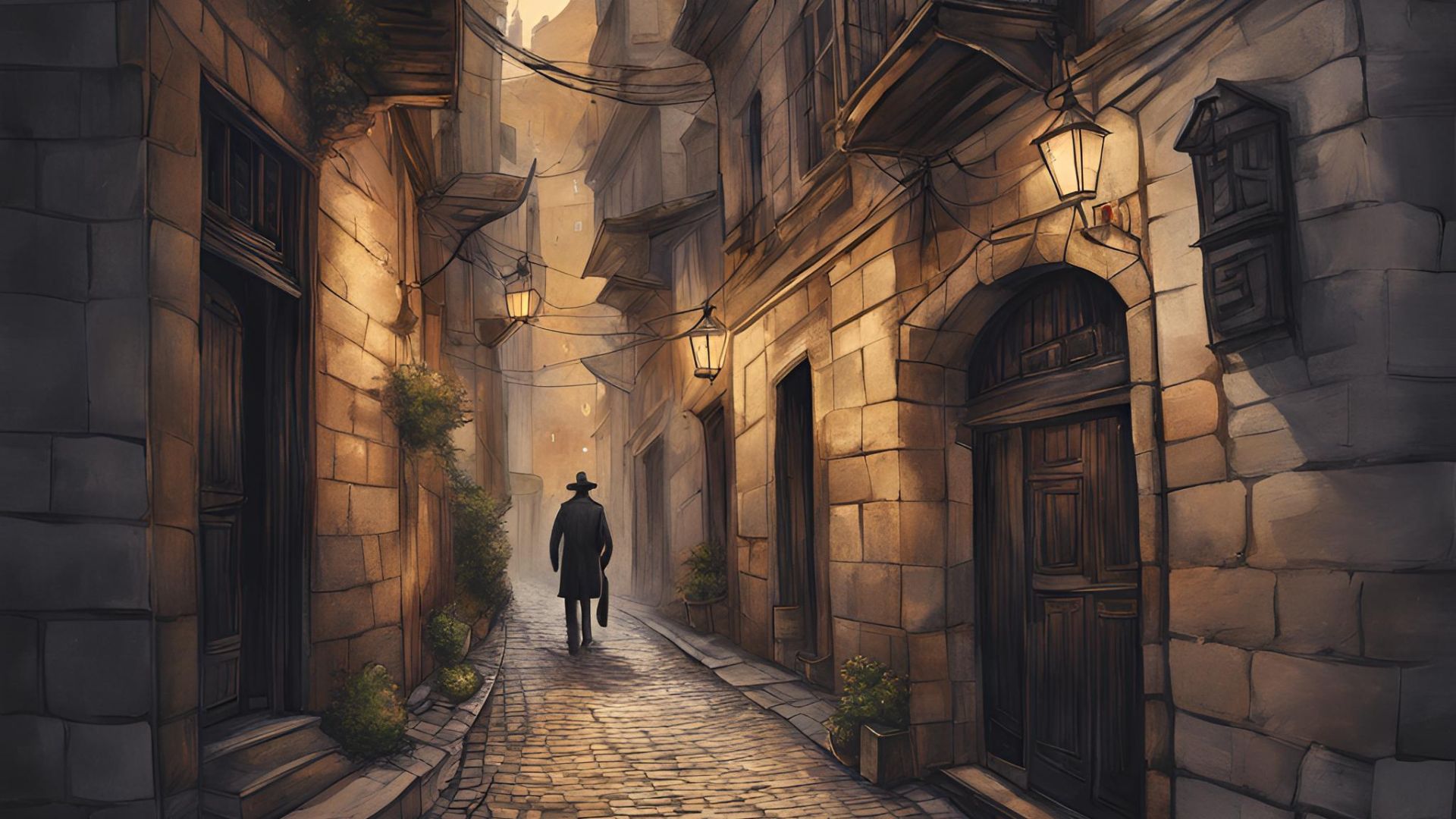Mystery stories have fascinated readers for generations, drawing them into a world of suspense, secrets, and thrilling twists. But what makes a mystery story captivating? Let’s explore the key elements and steps to create your own intriguing mystery tale.
1. The Hook

Every great mystery story starts with a hook—something that grabs the reader’s attention right away. This could be an unexpected event, a strange occurrence, or a puzzling question that sets the stage for the mystery.
Example: On a foggy evening, the peaceful town of Alderwood was jolted by the shrill sound of the museum’s alarm. By the time the guards arrived, the gallery was empty. The priceless painting, ‘The Midnight Sun,’ had vanished into
thin air, leaving behind no clues except for a single, mysterious white feather on the floor. Who could have pulled off such a daring heist, and why?

ANJALY FRANCIS
Anjaly is the founder of Common Room and a Cambridge- certified teacher of English. Her childhood goal was to read every book in the children’s section of the library. Through Common Room, she wishes to inspire and nurture young minds by providing a platform to explore and develop their writing skills, foster creativity, and ignite a love for storytelling.
2. The Setting
The setting is where your mystery unfolds. It could be a creepy old mansion, a quiet village, or even a bustling city. The setting should add to the suspense and mood of the story.
Example: The small coastal town of Alderwood was known for its eerie fog that rolled in from the sea every evening. At the heart of the town stood the old museum, a grand, gothic building with towering structures and winding staircases—a perfect place for secrets to be hidden.
3. The Characters
Introduce your characters, especially the detective or protagonist who will solve the mystery. Include suspects and witnesses, each with their own motives and secrets.
Example:
Detective Blake: A sharp-eyed investigator known for his keen observation skills and calm demeanor.
Mr. Thompson: The museum curator, who seemed overly anxious and secretive when questioned about the stolen painting.
Ms. Green: An art expert with a sharp tongue, who had recently argued with Mr. Thompson about the museum’s latest acquisitions.

4. The Crime or Mystery
Clearly define what the mystery is. This could be a crime, a disappearance, or any puzzling event that needs solving.
Example: The priceless painting, ‘The Midnight Sun,’ had been stolen from its secure location in the gallery, which was believed to be impenetrable. No fingerprints were found—only a single, enigmatic white feather.
5. Clues and Red Herrings
Scatter clues throughout the story that lead your detective closer to solving the mystery. Also, include red herrings—false clues that mislead the reader and make the plot more intriguing.
Example:
- Clue: A surveillance camera captured a fleeting image of a shadowy figure wearing a distinctive hat, seen near the gallery moments before the theft.
- Red Herring: A local artist, known for his disdain for modern art, had publicly argued with the museum staff, making him an easy but misleading suspect.

6. The Investigation
Show the detective’s journey as they gather clues, interview suspects, and piece together the puzzle. This is where the story builds suspense and keeps the reader guessing.
Example: Detective Blake spent hours reviewing security footage, questioning staff, and examining the gallery. He noticed Mr. Thompson’s shaky hands and Ms. Green’s evasive answers. But it was the discovery of a rare bird species, whose feathers matched the one found at the scene, that pointed him in the right direction.
7. The Twist
Every good mystery has a twist—an unexpected turn that surprises the reader. This could be a hidden motive, an overlooked clue, or a shocking revelation.
Example: Just as Detective Blake thought he had pieced together the puzzle, he discovered the feather’s origin. It led her to an underground art smuggling ring, with Mr. Thompson revealed as the mastermind, using his position to cover his tracks.
8. The Resolution
Finally, reveal how the mystery is solved. The detective explains how the clues fit together, uncovers the true culprit, and ties up any loose ends.
Example: In a dramatic confrontation in an old alley way, Detective Blake laid out the evidence, cornering Mr. Thompson. He detailed how he had used his insider knowledge to deactivate the alarms and orchestrate the theft, planning to sell the painting to the highest bidder.
9. The Conclusion
Wrap up the story with a satisfying ending. Show the consequences for the culprit and how the detective feels about solving the case. Maybe hint at another mystery to come.
Example: With the painting safely returned to the gallery and Mr. Thompson behind bars, the town of Alderwood could breathe a sigh of relief. Detective Blake, however, couldn’t shake the feeling that there were more secrets lurking in the shadows, waiting to be uncovered.
Writing a mystery story is like solving a puzzle. By following these steps, you can create a gripping tale that keeps readers on the edge of their seats. So grab your notebook, unleash your imagination, and start crafting your own mystery adventure today!
If you’d like a teacher explain these concepts in a fun and interesting manner, engage in discussions with like- minded peers and draft your first mystery story, our Crafting Clues course might be perfect for you! Limited spots available. Comment below for more information.

